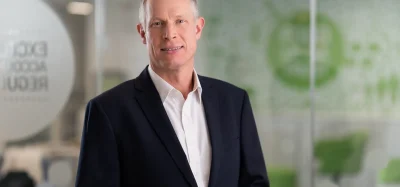Looking after your team’s and your own mental wellbeing at work
- Like
- Digg
- Del
- Tumblr
- VKontakte
- Buffer
- Love This
- Odnoklassniki
- Meneame
- Blogger
- Amazon
- Yahoo Mail
- Gmail
- AOL
- Newsvine
- HackerNews
- Evernote
- MySpace
- Mail.ru
- Viadeo
- Line
- Comments
- Yummly
- SMS
- Viber
- Telegram
- Subscribe
- Skype
- Facebook Messenger
- Kakao
- LiveJournal
- Yammer
- Edgar
- Fintel
- Mix
- Instapaper
- Copy Link
Posted: 15 April 2021 | Denis Treacy | No comments yet
Denis Treacy discusses Covid’s impact on mental wellbeing in the workplace and offers some advice on ways to remain engaged, connected and positive.


The modern world has never seen anything quite like the magnitude and impact of a microscopic organism; debate is ongoing as to whether it actually lives or is just a piece of biological genetic code. Covid global infections stand at 136 million, with worldwide deaths heading for three million*; living or not, a few months after this infecting agent appeared, the world seemed to shift upon its own axis.
Resilience is a term which describes the capability to respond and recover quickly following adversity, so should we have expected this pandemic?
We had little to base Covid’s impact upon, with the exception of the Spanish flu outbreak in 1918, and (perhaps naively) no real reason for concern that a similar event could occur. Bill Gates’ TED Talk in 2015 did warn us this was pending but reassured that the world had time to prepare. So how well was the UK food industry prepared?
Mental wellbeing in the food sector
The food sector did an excellent job of adapting in a time of uncertainty, but one area which may have become overshadowed by concerns over personal protective equipment (PPE), handwashing and social distancing (which remain all very important considerations nevertheless), was the impact this pandemic would have on mental wellbeing in the workplace.


Whether it was fears of contracting the infection at work – especially when PPE was not so readily available – or concerns of working in a high-risk sector or, conversely, within a more isolated environment (eg, remote working), the last year or so saw familiar routines shaken up.
If we consider the impact of a pandemic to be that of a tsunami, which will engulf everything below the water line, it will find the gaps – the weaknesses and the vulnerabilities in businesses, supply chains, relationships with suppliers, customers, teams – and it will find the weaknesses in people.
As the floods hit, food businesses had to react quickly. Provided that leadership was organised and competent, with a well-developed and carefully considered risk strategy and crisis response structure, then the ability to pivot systems/routines and adapt accordingly would have come more easily.
If we reflect on how successful businesses reacted, their priorities would have been as follows:
- Furlough the at risk and vulnerable and move to homeworking
- Secure safe working by providing clear instructions, materials and supplies for personnel, new rules established by risk for areas such as locker rooms, toilets, canteens and offices
- Reinforce mental health first aiders and upskill for remote working impact and the clear and present risk that presents to some
- Invoke all appropriate – but proportionate – financial supports available
- Commit to continuing to operate reasonable and complementary transactions with suppliers and customers, supporting those already identified as at risk, ensuring your key suppliers are supported, such that they are still around for you afterwards
- Engage with customers and confirm resilience, together with your capability to flex and respond to any changes in demand, or indeed, services required.
- With regards to mental wellbeing, assess coping mechanisms necessary to combat isolation and disconnection due to lockdowns and remote working.
Ways to keep happy and motivated at work
Frames and structures for building a working week timetable have been used very successfully by leadership and remote working groups. Typical examples are to consider the day ahead in a peaceful, focused way; create distinct differences in the character of the working day vs. the weekend or non-working day.
Also, compartmentalising the day into clear and distinct sections, and ensuring a start and end point for the day. Established and scheduled start and end times to the working day, lunch breaks, exercise breaks and dog walks are all helpful.
It’s also good to get dressed for work – don’t spend the day in your dressing gown! Moreover, changing your working location throughout the day keeps the environment varied and your focus high. Move to different rooms if you are able; perhaps consider alternative rooms or environments for different types of tasks. Follow different light or sunlight patterns through the house or your location – you can even take work outside.
Routine and regular events to punctuate remote working, such as exercise regularly or just walking to the local shop, can be invigorating. Take little breaks, have a walk around your house, listen to some music, paint, dance, pray, write, sing, watch a little TV (non-engaging, easy watching) – do something which makes you relax and happy. Remember that no one can focus for 24-hours a day – we all need time to recharge – there’s no shame in taking screen breaks; it’s good for your mental and physical wellbeing to step away.
Leadership in isolation
Remember that leadership can be a very lonely place in isolation, where not only the loss of contact, but also the loss of value and purpose could be in play. Leaders can operate to ensure they are less isolated, not just during this pandemic, but generally.


For example, being available – just as in an open plan office – to your team via online catch-ups is a great way to keep engaged and an important quality in a leader.
Have a subject to discuss when you do want to connect with a member of the team. Check in with your team members with a regularity appropriate to them – perhaps daily for some, less frequently for others, depending on their need not on your own preferences.
Techniques such as inviting your team members for an online coffee when you are having a break can also help make them and you feel connected.
When you are taking a break from working and perhaps grabbing some fresh air, invite a team member to ‘join you’ on a Whatsapp/Facetime/phone call (your preferred platform) walk. Some leaders find creating informal chat groups to share humour and wellbeing messages helps keeps a team strong and connected.
Hopefully this article has given you some ideas about news ways to remain engaged with your work and team. Stay safe, happy and connected!
About the author
Denis Treacy is an executive leader in the food industry with over 40 years of FMCG industry experience – the first 10 spent in scientific roles and the last 30 years at management, leadership, executive chief officer and president level.
After early roles in Unilever, Arla Foods and InBev, Denis was until very recently, President & Chief Safety, Quality, Security & Environment Officer for the $5 billon global snack foods business, Pladis Global. Denis also led the health and safety agenda for Pladis parent company, Yildiz Holdings, the $12 billon frozen food, retail, engineering, mining and personal care company.
Denis founded Culture Compass in 2019, which helps businesses step change performance by understanding the links between policies, organisation and performance through the critical element of culture and behaviour.
*At the time of writing








